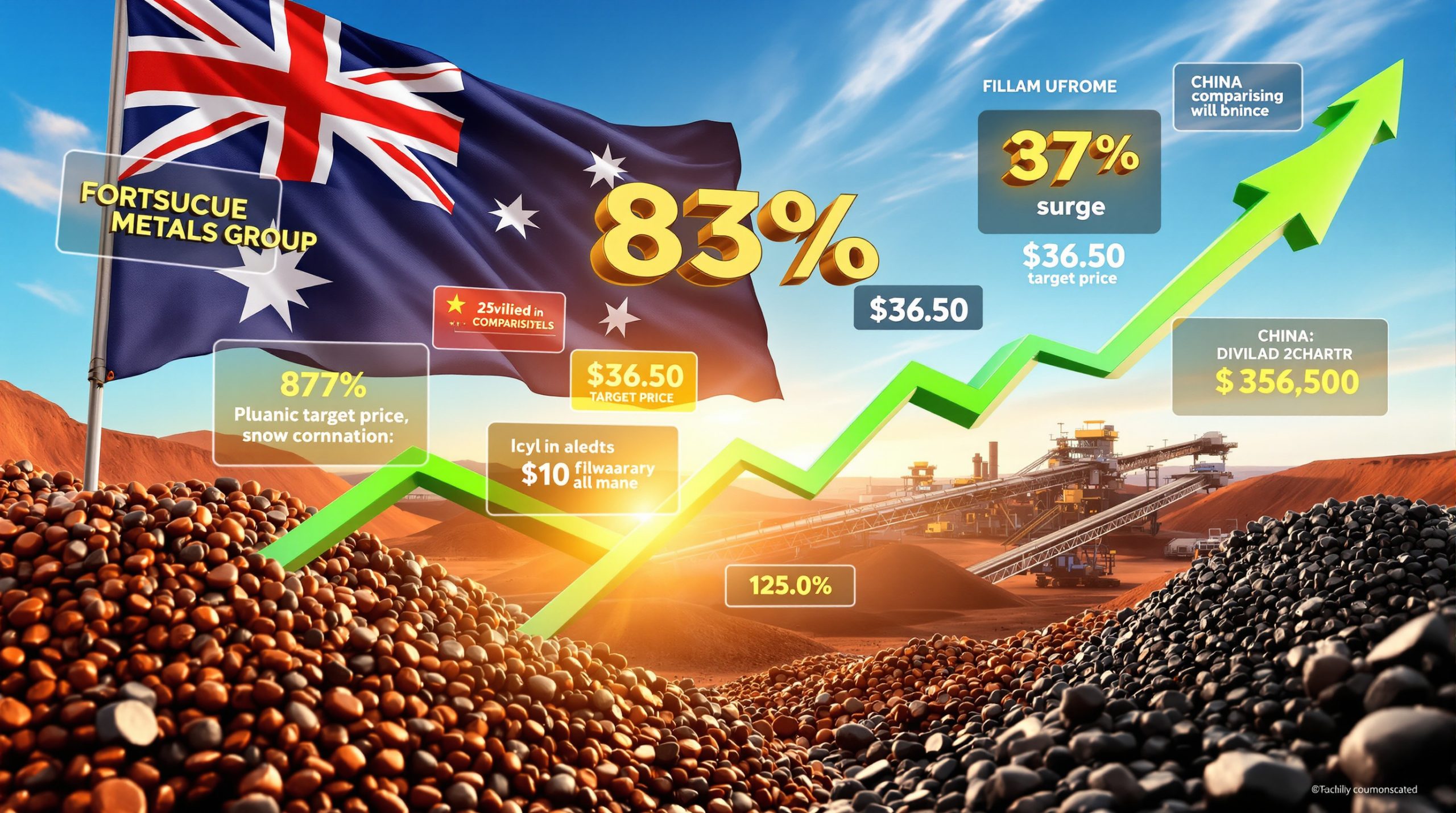What Is the Debt Ceiling and How Does It Affect Inflation?
The debt ceiling represents the maximum amount of money the U.S. government can borrow to meet its existing legal obligations. This includes Social Security and Medicare benefits, military salaries, interest on the national debt, tax refunds, and other payments. Without the ability to borrow more money when needed, the government risks defaulting on these obligations.
When Congress raises the debt ceiling, it doesn't authorize new spending but rather allows the Treasury to pay for expenses already approved. However, the debt ceiling and inflation share an intimate relationship that affects the entire economy.
Defining the Debt Ceiling
The debt ceiling is essentially a legislative limit on the amount the federal government can borrow. When government spending exceeds tax revenues, the Treasury issues bonds to cover the difference. However, once the outstanding debt reaches the ceiling, the Treasury must resort to "extraordinary measures" to prevent default until Congress raises the limit.
Recent history has seen a particularly significant development with a proposal to increase the debt ceiling by $5 trillion—an unprecedented single increase that highlights the escalating scale of government borrowing needs.
"Money and debt are the opposite sides of the same fiat coin… The system needs to go into further debt to continue functioning." – Rafie Farber
The Relationship Between Debt and Inflation
When the government raises the debt ceiling, it creates the ability to borrow more money, which often leads to increased spending. This additional money circulating in the economy can drive inflation through several mechanisms:
- Increased money supply: Government borrowing and spending pumps more money into the economy, potentially devaluing existing currency
- Currency pressure: Higher debt levels may lead to reduced confidence in the dollar, further contributing to inflation
- Market expectations: Persistent deficit spending shapes inflation expectations, which can become self-fulfilling
The connection between government debt and inflation has been demonstrated throughout history. During the 1970s, expansionary fiscal policies contributed to inflation rates exceeding 14%, while gold prices analysis rose dramatically from $35 to over $800 per ounce—a clear example of precious metals serving as an inflation hedge.
Historical Context of Debt Ceiling Increases
The debt ceiling has been raised over 100 times since its creation, though these increases have become increasingly contentious in recent decades:
- The frequency of increases has accelerated as government spending has expanded
- Recent increases have been larger and more politically divisive
- The current U.S. debt-to-GDP ratio stands at approximately 132%, compared to just 95% during the 2011 debt ceiling crisis
This pattern of ever-increasing debt ceilings creates potential inflationary pressure points in the economy. As Rafie Farber notes, "Raising the debt ceiling $5 trillion means they'll need the Fed to create money… leading to inflation." The most recent evidence of this relationship came during 2020-2021, when massive government stimulus contributed to the highest inflation rates in 40 years.
How Does Government Spending Impact Monetary Policy?
Government fiscal policy and Federal Reserve monetary policy are inextricably linked through the mechanism of government debt. When Congress authorizes spending beyond tax revenues, the resulting deficits must be financed through Treasury bond issuance—and these bonds must find buyers in the market.
The Federal Reserve's Balancing Act
The Federal Reserve faces significant challenges when government debt increases substantially:
- When debt issuance outpaces market demand, the Fed may need to purchase Treasury bonds
- This process effectively creates new money in the economy through quantitative easing
- During the COVID-19 response, the Fed purchased approximately $3.3 trillion in bonds in 2020 alone
"The Fed must buy Treasury bonds when debt increases… creating new money," explains Farber, highlighting how fiscal decisions force monetary reactions. This relationship becomes particularly strained during periods of high debt issuance, as we've seen in recent years.
Supplementary Leverage Ratio Considerations
Banking regulations like the Supplementary Leverage Ratio (SLR) play a crucial but often overlooked role in the government debt ecosystem:
- SLR requirements mandate that banks maintain capital against their assets, including Treasuries
- Adjustments to these requirements directly impact banks' ability to purchase government debt
- During crises, regulators often modify SLR rules to enhance market functioning
As Farber notes, "Slashing the Supplementary Leverage Ratio lets banks buy more Treasuries, fueling inflation." This technical adjustment has real-world implications for both monetary stability and inflation risks by expanding banks' capacity to absorb government debt without corresponding balance sheet constraints.
The Debt-Money Relationship in a Fiat System
In our modern monetary system, the relationship between debt and money creation has fundamental implications:
- Government debt issuance typically requires corresponding money creation
- As debt levels rise, monetary expansion becomes increasingly necessary
- This structural relationship creates an inherent inflationary bias in the system
The circular nature of this relationship means that addressing government debt often requires monetary interventions that themselves carry inflationary risks. This dynamic helps explain why fiat currency systems historically trend toward inflation over time rather than maintaining stable purchasing power.
What Happens When the Debt Ceiling Is Raised?
The raising of the debt ceiling sets in motion a series of economic and market events with both immediate and long-term implications for investors, consumers, and the broader economy.
Immediate Market Reactions
When the debt ceiling is raised, several market adjustments typically occur:
- Treasury bond markets recalibrate to anticipate new debt issuance
- Yields may rise if markets perceive supply will outpace demand
- Financial institutions reposition portfolios to accommodate new government securities
- Stock markets often respond positively to the removal of default risk
These initial adjustments reflect the market's need to absorb significant new debt issuance. In the case of the recent $5 trillion ceiling increase, the scale is particularly challenging for markets to digest without intervention.
Long-term Economic Implications
Beyond immediate market reactions, debt ceiling increases carry lasting economic effects:
- Each increase potentially adds to the national debt burden
- Higher debt servicing costs—projected to reach $1.4 trillion annually by 2033 according to the Congressional Budget Office—can crowd out other government spending
- Persistent deficit spending may eventually erode confidence in the currency
- The rising debt-to-GDP ratio (currently 132%) raises questions about long-term fiscal sustainability
These longer-term impacts accumulate over time, potentially creating structural economic headwinds that affect everything from interest rates to currency valuations.
Case Study: Recent $5 Trillion Debt Ceiling Increase
The recent substantial increase in the debt ceiling illustrates these dynamics with unprecedented clarity:
- The $5 trillion increase represents an extraordinary expansion of borrowing capacity
- As Farber notes, "$5 trillion doesn't exist… The Fed must act as buyer of last resort"
- The magnitude suggests that traditional market participants cannot absorb this debt alone
- Previous debt ceiling crises, like 2011's standoff that triggered a U.S. credit rating downgrade, demonstrate potential market volatility
This massive expansion of borrowing authority raises questions about who will purchase these Treasury securities. If market demand proves insufficient, the Federal Reserve may need to expand its balance sheet further—a potentially inflationary outcome.
Why Are Precious Metals Considered Inflation Hedges?
Precious metals have served as monetary assets and inflation hedges for thousands of years, maintaining their status even as fiat currency systems have come and gone.
Gold and Silver's Historical Role
The enduring monetary properties of precious metals derive from several key characteristics:
- Limited supply: Unlike fiat currencies that can be created indefinitely, gold and silver have finite supply
- Universal recognition: These metals are valued across cultures and time periods
- Divisibility and portability: They can be divided into smaller units while maintaining value
- Store of value: Historical evidence shows they typically preserve purchasing power during inflationary periods
"Precious metals preserve purchasing power when fiat systems fail," notes Farber, highlighting their fundamental appeal during monetary uncertainty. The historical record supports this view—during the inflationary 1970s, gold rose approximately 2,200% as fiat currencies lost purchasing power.
Market Behavior During Monetary Uncertainty
Precious metals markets exhibit characteristic patterns during periods of monetary stress:
- Consolidation phases typically precede major price advances
- These consolidation periods can last months even during strong bull markets
- When breakouts occur, price movements can be dramatic and swift
According to Farber, "Consolidation phases (e.g., 3 months for gold) precede rallies during monetary stress." The current market shows gold consolidating for approximately three months and silver trading around $36 per ounce—potentially setting up for future advances based on historical patterns.
Current Market Dynamics
The present precious metals market displays several notable characteristics:
- Gold has been consolidating after reaching all-time highs
- Silver recently experienced a breakout followed by sideways movement around $36
- Platinum, historically called "little silver," has shown significant price movement
- Between 2020-2024, gold has risen approximately 40% following extensive monetary stimulus
These price actions may signal building pressure in the monetary system as debt ceiling increases translate into potential inflation. Particularly noteworthy is platinum's movement, which some analysts view as a potential leading indicator for silver prices.
How Should Investors Approach Precious Metals?
For investors considering precious metals as inflation hedges or portfolio diversifiers, a strategic approach can help maximize benefits while minimizing risks.
Best Practices for Physical Metal Ownership
Those looking to own physical precious metals should consider these guidelines:
- Focus on standard bullion: Purchase recognized products like American Eagles, Canadian Maple Leafs, or other sovereign coins/bars
- Avoid numismatic coins: As Farber advises, "Avoid numismatics, leveraged ETFs, and bank safety deposit boxes"
- Consider secure storage options: Home safes, private vaulting services, or allocated storage programs offer alternatives to bank safety deposit boxes
- Maintain proper documentation: Keep purchase records and authentication certificates
- Purchase from reputable dealers: Established bullion dealers with strong reputations minimize counterparty risk
Physical ownership provides direct exposure without counterparty risk, making it the preferred approach for many investors concerned about systemic financial risks.
What to Avoid When Investing in Precious Metals
Common mistakes to avoid in precious metals investing include:
- Using excessive leverage: Leveraged exposure can lead to forced liquidations during volatile periods
- Investing in leveraged ETFs: Products like 2x silver funds experienced 60% drops during 2020 volatility despite silver only falling 30%
- Concentrating too heavily on speculative mining companies: Exploration companies carry significant operational risks beyond metal price exposure
- Overpaying for collectible or "limited edition" products: These often carry high premiums that may not be recoverable
These pitfalls can significantly reduce returns or increase risks beyond the inherent volatility of precious metals markets themselves.
Balanced Portfolio Allocation
A prudent approach to precious metals investing includes thoughtful allocation:
- Start conservatively: Begin with 5-10% of your total portfolio as Farber recommends
- Consider incremental increases: During periods of heightened monetary uncertainty, gradual increases to 10-20% may be warranted
- Diversify within metals: Spread holdings across gold, silver, and potentially platinum
- Balance physical and paper: Consider a mix of physical bullion and well-structured ETFs like Sprott Physical Silver Trust (PSLV)
This balanced approach allows investors to gain exposure to precious metals' inflation-hedging properties without overcommitting to a single asset class. As Farber notes, "Gradual accumulation beats lump-sum purchases," allowing investors to average into positions over time.
What Are the Signs of Potential Financial System Stress?
Identifying early warning signs of financial system stress can help investors position themselves defensively before major market disruptions occur.
Institutional Preparations
Various indicators suggest financial institutions may be preparing for potential instability:
- Physical security measures: Recent reports highlight security enhancements around Federal Reserve buildings, including new gates and barriers
- Regulatory adjustments: Changes to banking rules that expand capacity for Treasury purchases
- Liquidity operations: The Federal Reserve's reverse repo usage has fallen dramatically from $2.5 trillion in 2022 to approximately $400 billion in 2024
These seemingly technical or operational changes can signal preparations for monetary interventions. As Farber observes, "Gates imply preparation for monetary intervention or unrest," suggesting that physical security enhancements may coincide with anticipated financial volatility.
Historical Patterns at System Endpoints
Financial systems approaching structural breaking points often display recognizable patterns:
- Increased intervention frequency: Central bank operations become more regular and larger
- Rule changes: Regulatory frameworks adjust to accommodate market stresses
- Volatility spikes: Asset prices exhibit increased instability across markets
- Divergence between physical and paper markets: Premiums for physical assets may rise substantially
These patterns appeared before previous financial crises, including 2008, when enhanced Federal Reserve security preceded major market interventions and bailouts. Similar divergences between paper and physical precious metals markets occurred in 2020 when COVID disruptions revealed fragility in metal supply chains.
The Role of Public Perception
How the public perceives financial system stability plays a crucial role in system dynamics:
- Declining institutional trust: Surveys show eroding confidence in traditional financial institutions
- Alternative asset interest: Growing interest in decentralized assets and precious metals
- Generational shifts: Younger demographics increasingly question traditional financial assets
Changes in public sentiment can accelerate system stress, as loss of confidence tends to be self-reinforcing. The increasing interest in precious metals among younger investors represents a notable shift from previous decades when traditional financial assets dominated portfolio allocations.
How Do Financial Systems Eventually Reset?
Throughout history, monetary systems have followed cyclical patterns of expansion and contraction, with transitions between systems often occurring during periods of significant stress.
The Cyclical Nature of Monetary Systems
Monetary systems historically follow predictable cycles:
- Expansion phases: Characterized by increasing debt and currency creation
- Stress periods: System constraints become apparent as debt servicing grows difficult
- Contraction phases: Where purchasing power shifts toward tangible assets
- Reset events: Formal or informal reordering of monetary arrangements
"Financial systems eventually blow up with inflation. They contract back down into gold and silver," explains Farber, describing the historical pattern of monetary cycles. This observation aligns with monetary history from the Roman Empire's currency debasement to modern fiat currency episodes.
Wealth Preservation During System Transitions
During monetary system transitions, a key principle emerges:
- Wealth redistribution: Assets don't disappear but rather shift between asset classes
- Purchasing power protection: The primary goal becomes preserving real value rather than nominal returns
- Liquidity advantage: Assets that maintain liquidity during transitions provide optionality
Liquid commodities with monetary properties—primarily gold and silver—typically benefit during these transitions. As Farber notes, "We're going to contract back down into gold and silver," suggesting that these metals may serve as bridges between monetary regimes.
Preparing for Monetary Evolution
Practical steps for navigating potential monetary system changes include:
- Understanding monetary fundamentals: Distinguish between currency (medium of exchange) and money (store of value)
- Recognizing historical patterns: Study previous monetary transitions for insights
- Maintaining liquidity across asset classes: Avoid overconcentration in any single asset type
- Focusing on purchasing power: Track portfolio value in terms of real goods rather than nominal currency
These approaches help investors maintain perspective during periods of monetary uncertainty, focusing on the preservation of real wealth rather than paper gains that may prove ephemeral.
Frequently Asked Questions About Debt and Inflation
How does raising the debt ceiling affect everyday consumers?
Raising the debt ceiling impacts consumers through multiple channels:
- Inflation effects: Increased government borrowing can lead to higher inflation, reducing purchasing power
- Interest rate pressures: Greater debt issuance may push interest rates higher, affecting mortgages and loans
- Tax implications: Rising debt servicing costs may eventually require higher taxes
- Economic growth impacts: Excessive debt can constrain long-term economic growth potential
The effects aren't always immediate but tend to accumulate over time as debt levels increase relative to the size of the economy. For the average consumer, these impacts typically manifest as higher costs of living, particularly for necessities like food, housing, and energy.
What historical examples show the relationship between government debt and precious metals?
Several historical episodes clearly demonstrate the relationship:
- 1970s stagflation: As US economy inflation debt expanded and inflation soared, gold rose from $35 to over $800
- 2008-2011 period: Following quantitative easing, gold doubled from approximately $800 to over $1,900
- Post-COVID stimulus: Government spending contributed to gold rising from $1,500 to over $2,400
These examples show how precious metals typically respond to periods of rapid government debt expansion and accompanying monetary creation. The pattern has remained consistent across different economic environments and time periods.
How much of a portfolio should be allocated to inflation hedges?
Appropriate allocation depends on individual circumstances and market conditions:
- Conservative approach: 5-10% in precious metals and other inflation hedges
- Moderate approach: 10-20% across various inflation-resistant assets
- Defensive positioning: During periods of high monetary uncertainty, allocations of 20-30% to hard assets may be warranted
As Farber suggests, starting with a modest allocation and gradually increasing exposure allows investors to build comfort with these assets while managing volatility risk. The appropriate level depends on factors including
Wondering How to Stay Ahead of Major ASX Mineral Discoveries?
Discover real-time alerts on significant ASX mineral discoveries with Discovery Alert's proprietary Discovery IQ model, transforming complex mining data into actionable investment insights that could generate substantial returns. Explore historic discovery examples and their exceptional market outcomes by visiting the Discovery Alert discoveries page and position yourself ahead of the market.




